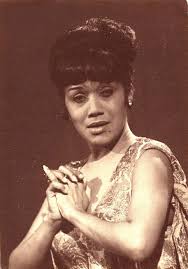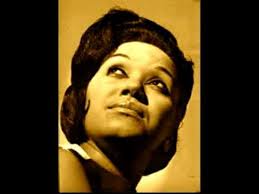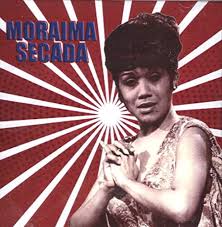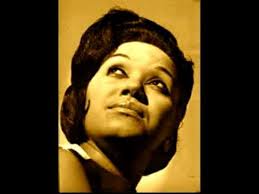 MORAIMA SECADA, CUBAN SINGER BETTER KNOWN AS “LA MORA”. VIDEOS.
MORAIMA SECADA, CUBAN SINGER BETTER KNOWN AS “LA MORA”. VIDEOS.
Moraima Secada was born in Santa Clara, Las Villas on September 10, 1930. Cuban singer, she was one of the most popular interpreters of the movement called feeling, initiated from the creative point of view by important composers such as Tania Castellanos, Jorge Masón, José Antonio Méndez, Piloto and Vera, César Portillo de la Luz, Ñico Rojas, and Luis Yáñez, among others very significant within this style.
By the month of August 1940 and at the age of ten, Moraima, together with his family, moved to the City of Havana, appearing soon after on the radio program ‘La Corte Suprema del Arte’, on the defunct station CMQ de Monte y Prado, he won one of the first prizes singing the pasodoble «Valencia», by the Spanish composer José Padilla.
ARTISTIC CAREER.
In 1950 and at the age of 20, Moraima Secada began her artistic career by becoming a member of the famous ‘Anacaona’ female orchestra where she met the singer Omara Portuondo. With the Anacaona she traveled to countries such as Venezuela, Haiti, and Santo Domingo. For Moraima, this stage with the remarkable group was wonderful from the human point of view and very significant for her training as an artist due to the discipline she acquired through her director Argimira Castro and her seven sisters.
In 1952 the excellent pianist and choir director Aida Diestro organized her famous vocal quartet, ‘Las D’Aida’, Moraima was one of those chosen to integrate it together with the excellent singers Elena Burke and the sisters Omara and Haydée Portuondo. Together with the unforgettable Aida Diestro, she remained for long and fruitful eight years. From her, La Mora learned, above all, to have full command of her voice, the tuning and its conduction within harmony, and the proper use of rubatean in rhythm. She made known and trained with the work of such important Cuban composers as Eliseo Grenet, René Touzet, Orlando de la Rosa, Felo Bergaza, Ernesto Lecuona, Armando Oréfiche, and Adolfo Guzmán.
START AS A SOLOIST.
In 1960, Moraima Secada parted ways with Las D ‘Aida and for a time as a soloist she was accompanied by the group’ Los Bravo ‘and as a member of the quartet’ Los Meme ‘. Soon after, she resumed her solo career, reaping an impressive string of successes and performing songs like “Alivio”, by Julio Cobo; “Forgive me conscience”, by Piloto and Vera; “Care”, by Nacho González; “Depends on you” and “It’s your name”, by Chany Chelacy; “You will find me”, by Tania Castellanos, among other works.
On the nights of May 26 and 27, 1972, La Mora offered its first recital of 20 songs at the Amadeo Roldán Theater. Her second recital was the following year, but this time, she not only performed works by Cuban composers but also from the rest of Latin America. In these two recitals, Moraima with her peculiar voice and dramatic and sometimes pathetic style, very contrary to her cheerful and joking personality, conquered all those who attended the theater.
Recalling their time as a member of Las D ‘Aida and without prejudice due to their conditions as soloists, the trio of Elena, Omara and Moraima joined in October 1979 and traveled to Mexico City invited by the Mexican producer Jorge Saldaña to act in the popular television program ‘Nostalgia’, broadcast on Channel 13 recalling them in their last performances in 1957 in that nation.
RETURN TO CUBA.
Back in our country Moraima, Elena and Omara occasionally continued singing together on some television programs. In 1983 they sang “Amigas”, by Alberto Vera and participated in the homage of this composer, organized by the Union of Writers and Artists of Cuba. They also performed at the Amelia Peláez Art Gallery, in Lenin Park. His voice was recorded on several small and two long-playing albums for the Areíto label where his latest hits appear, among them the song “Me niego”, by Tania Castellanos, and the boleros “Depende de ti”, by Chany Chelacy, and ” That which is there “, by Juan Arrondo.
The singer Moraima Secada, ‘La Mora’ died in the city of Havana on December 30, 1984, at the age of 54, a victim of liver disease.
With his physical disappearance, not only would one of the most unique voices of the popular songbook cease to exist, but also his wonderful humorous spark and his dialogue with the public, which motivated throughout his artistic career a sympathy that was latent until the end of his admirable lifetime.
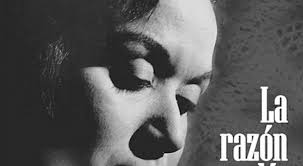 MORAIMA SECADA, CANTANTE CUBANA MÁS CONOCIDA COMO “LA MORA”. VIDEOS.
MORAIMA SECADA, CANTANTE CUBANA MÁS CONOCIDA COMO “LA MORA”. VIDEOS.
Moraima Secada nació en Santa Clara, Las Villas el 10 de septiembre de 1930. Cantante cubana, fue una de las más populares intérpretes del movimiento denominado feeling, iniciado desde el punto de vista creativo por importantes compositores como Tania Castellanos, Jorge Masón, José Antonio Méndez, Piloto y Vera, César Portillo de la Luz, Ñico Rojas y Luis Yáñez, entre otros muy significativos dentro de este estilo.
Por el mes de agosto de 1940 y con diez años de edad, Moraima, junto a su familia se trasladó a la Ciudad de La Habana presentándose al poco tiempo en el programa de radio ‘La Corte Suprema del Arte’, en la desaparecida emisora CMQ de Monte y Prado, obtuvo uno de los primeros premios cantando el pasodoble «Valencia», del compositor español José Padilla.
CARRERA ARTISTICA.
En 1950 y con 20 años de edad, Moraima Secada inicia su carrera artística pasando a ser integrante de la famosa orquesta femenina ‘Anacaona’ donde conoce a la cantante Omara Portuondo. Con la Anacaona viajó a países como Venezuela, Haití y Santo Domingo. Para Moraima, esta etapa con la notable agrupación fue maravillosa desde el punto de vista humano y muy significativa para su formación como artista por la disciplina que adquirió a través de su directora Argimira Castro y sus siete hermanas.
En 1952 la excelente pianista y directora de coros Aida Diestro organizó su famoso cuarteto vocal, ‘Las D’Aida’, Moraima fue una de las escogidas para integrarlo junto a las excelentes cantantes Elena Burke y las hermanas Omara y Haydée Portuondo. Junto a la inolvidable Aida Diestro, permaneció durante largos y fructíferos ocho años. De ella La Mora aprendió, sobre todo, a tener un pleno dominio de su voz, de la afinación y su conducción dentro de la armonía, y el buen uso del rubateo en el ritmo. Dio a conocer y se adiestró con la obra de compositores cubanos tan importantes como: Eliseo Grenet, René Touzet, Orlando de la Rosa, Felo Bergaza, Ernesto Lecuona, Armando Oréfiche y Adolfo Guzmán.
EMPIEZA COMO SOLISTA.
En 1960, Moraima Secada se separó de Las D’ Aida y durante un tiempo como solista fue acompañada por el grupo ‘Los Bravo’ y como integrante del cuarteto ‘Los Meme’. Al poco tiempo reanudó su faceta como solista cosechando una impresionante cadena de éxitos e interpretando canciones como, “Alivio”, de Julio Cobo; “Perdóname conciencia”, de Piloto y Vera; “Cuidado”, de Nacho González; “Depende de ti” y “Se llama tú”, de Chany Chelacy; “Me encontrarás”, de Tania Castellanos, entre otras obras.
Las noches del 26 y 27 de mayo de 1972, La Mora ofreció su primer recital de 20 canciones en el Teatro Amadeo Roldán. Su segundo recital fue al año siguiente, pero esta vez, no sólo interpretó obras de compositores cubanos sino también del resto de Latinoamérica. En estos dos recitales, Moraima con su peculiar voz y estilo dramático y a veces patético muy contrario a su personalidad alegre y bromista, conquistó a todos los asistentes al teatro.
Rememorando su etapa como integrante de Las D’ Aida y sin prejuicio por sus condiciones como solistas el trío de Elena, Omara y Moraima se une por el mes de octubre de 1979 y viajan a la Ciudad de México invitadas por el productor mexicano Jorge Saldaña para actuar en el popular programa de televisión ‘Nostalgia’, transmitido por el Canal 13 recordándolas en sus últimas actuaciones en 1957 en dicha nación.
REGRESA A CUBA.
De regreso a nuestro país Moraima, Elena y Omara ocasionalmente siguieron cantando unidas en algunos programas de televisión. En 1983 cantaron “Amigas”, de Alberto Vera y participaron en el homenaje de este compositor, organizado por la Unión de Escritores y Artistas de Cuba. También actuaron en la Galería de Arte Amelia Peláez, del Parque Lenin. Su voz quedó registrada en varios discos pequeños y dos largas duración para el sello Areíto donde aparecen sus últimos éxitos, entre ellos la canción “Me niego”, de Tania Castellanos, y los boleros “Depende de ti”, de Chany Chelacy, y “Ese que está allí”, de Juan Arrondo.
La cantante Moraima Secada, ‘La Mora’ falleció en la ciudad de La Habana el 30 de diciembre de 1984, a los 54 años, víctima de una enfermedad hepática.
Con su desaparición física no solo dejaría de existir una de las voces más singulares del cancionero popular, sino también su maravillosa chispa humorística y su diálogo con el público los cuales motivaron en toda su carrera artística una simpatía que estuvo latente hasta el fin de su admirable vida.
Agencies/ Wiki/ Ecured/ Internet Photos/ YouTube/ Arnoldo Varona/ www.TheCubanHistory.com
THE CUBAN HISTORY, HOLLYWOOD.




